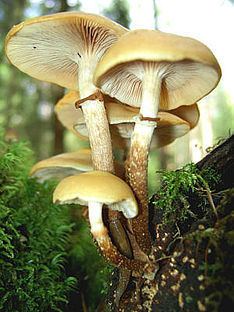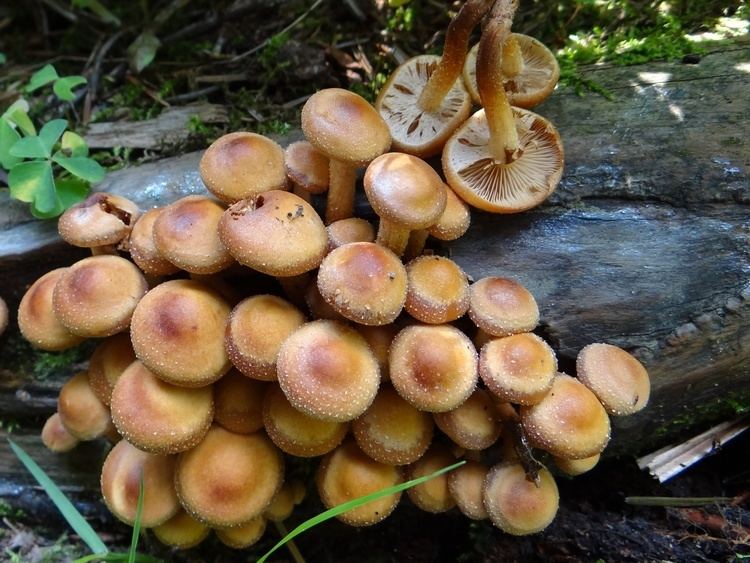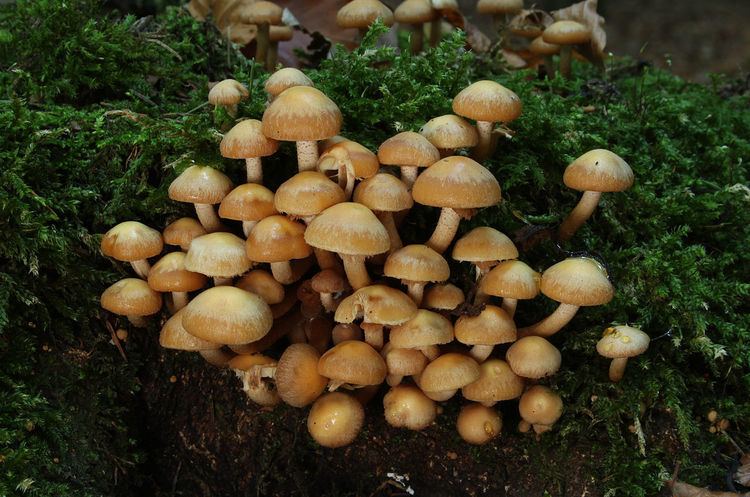Kingdom Fungi Order Agaricales | Division Basidiomycota Scientific name Kuehneromyces mutabilis Rank Species | |
Similar Kuehneromyces, Pholiota, Galerina marginata, Hypholoma fasciculare, Galerina | ||
zletes t kegomba kuehneromyces mutabilis sheathed woodtuft 2014
Kuehneromyces mutabilis (synonym: Pholiota mutabilis), commonly known as the sheathed woodtuft, is an edible mushroom that grows in clumps on tree stumps or other dead wood. A few other species have been described in the genus Kuehneromyces, but K. mutabilis is by far the most common and best known.
Contents
- zletes t kegomba kuehneromyces mutabilis sheathed woodtuft 2014
- zletes t kegomba kuehneromyces mutabilis sheathed woodtuft 2013 may
- Description
- Range
- Possibility of confusion with deadly species
- References

zletes t kegomba kuehneromyces mutabilis sheathed woodtuft 2013 may
Description

Range

Kuehneromyces mutabilis is found in Australia, Asia (in the Caucuses, Siberia, and Japan), North America, and Europe. In Europe, it can be found from Southern Europe to Iceland and Scandinavia.
Possibility of confusion with deadly species

The caps of this mushroom can be fried or used for flavouring in sauces and soups (the stems being considered too tough to eat).
K. mutabilis cannot be recommended as an edible mushroom as there is a real possibility that it could be confused with the deadly poisonous Galerina marginata, even by people who are quite knowledgeable. Although a typical K. mutabilis is easily distinguished from a typical G. marginata by the "booted" stipe which is shaggy below the ring (see photos), this character is not reliable and G. marginata can also have scales. The main differences are:
